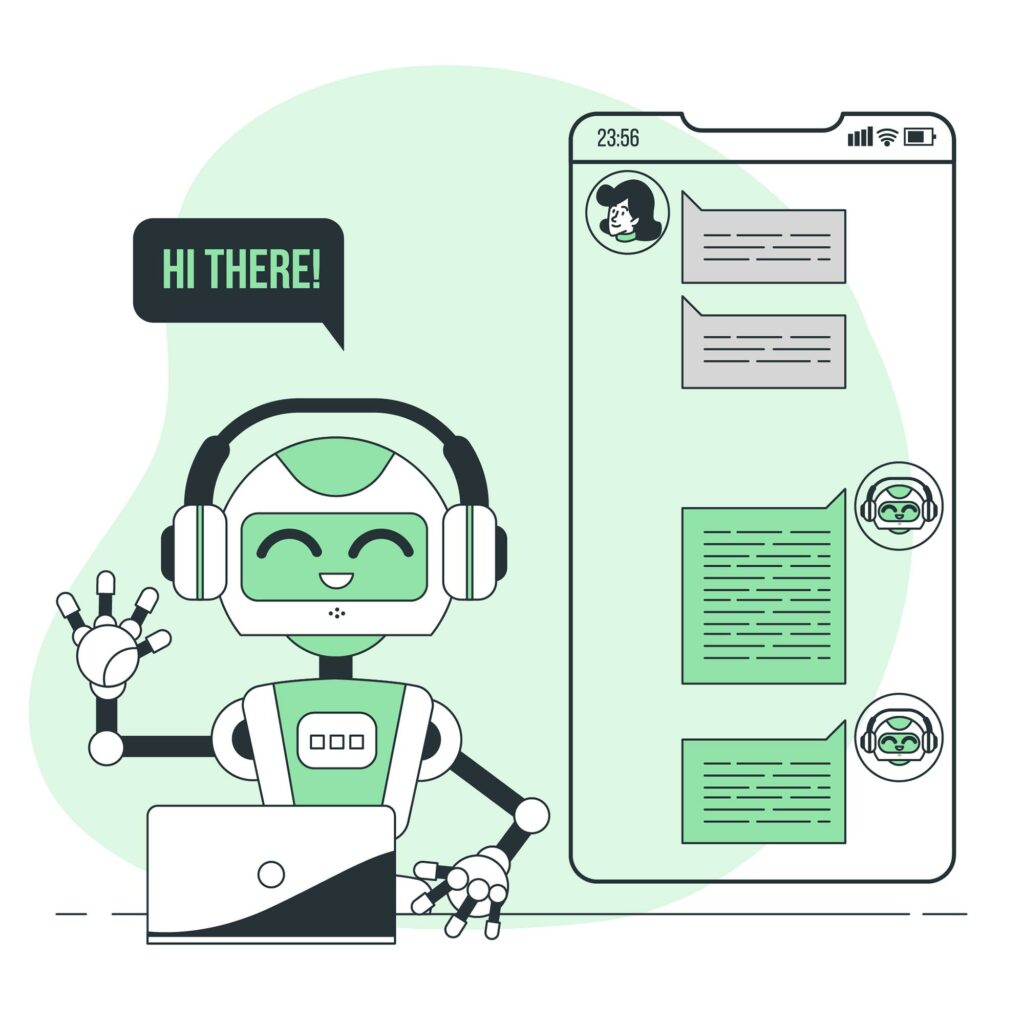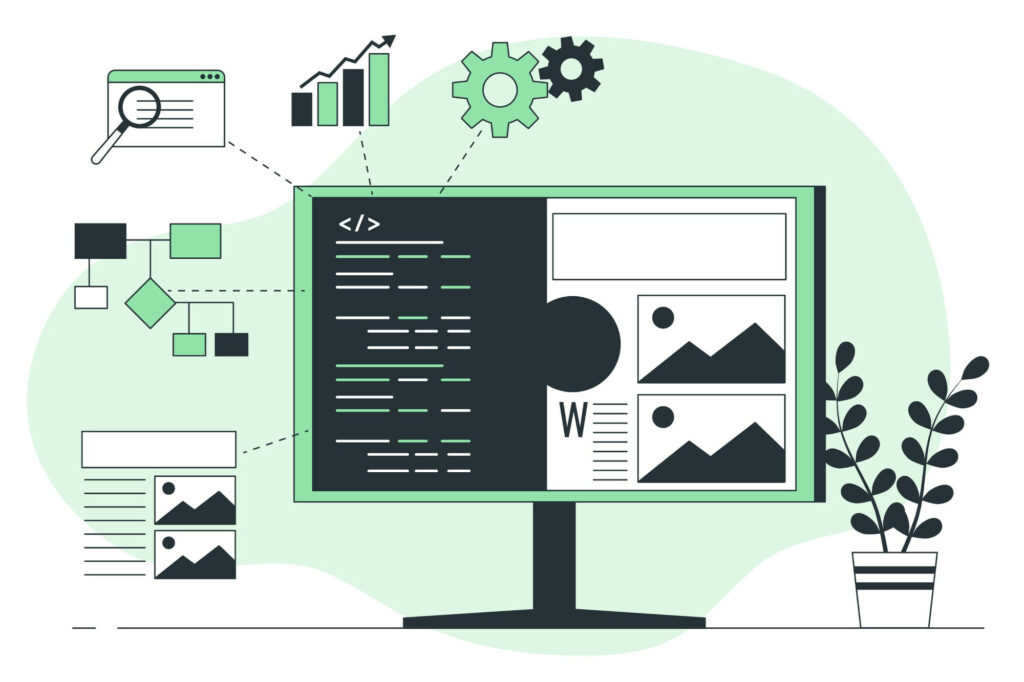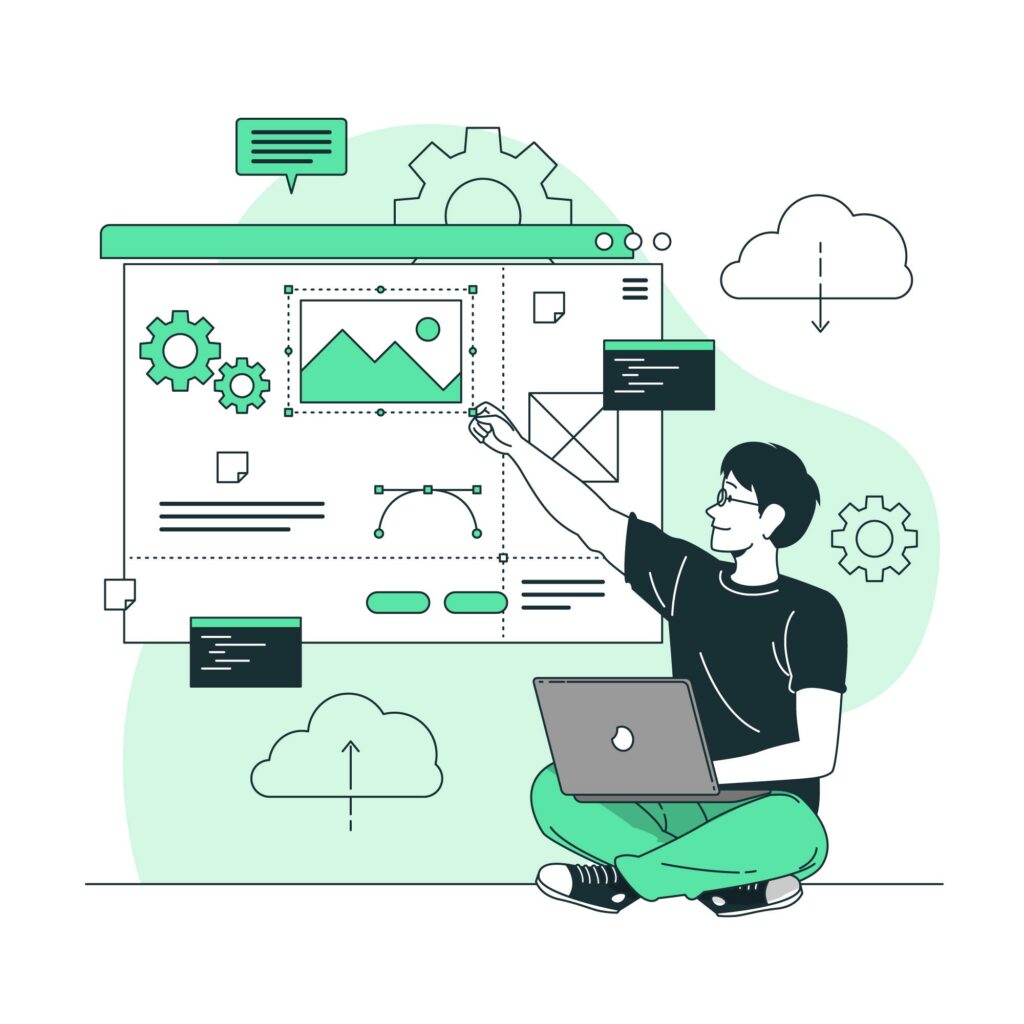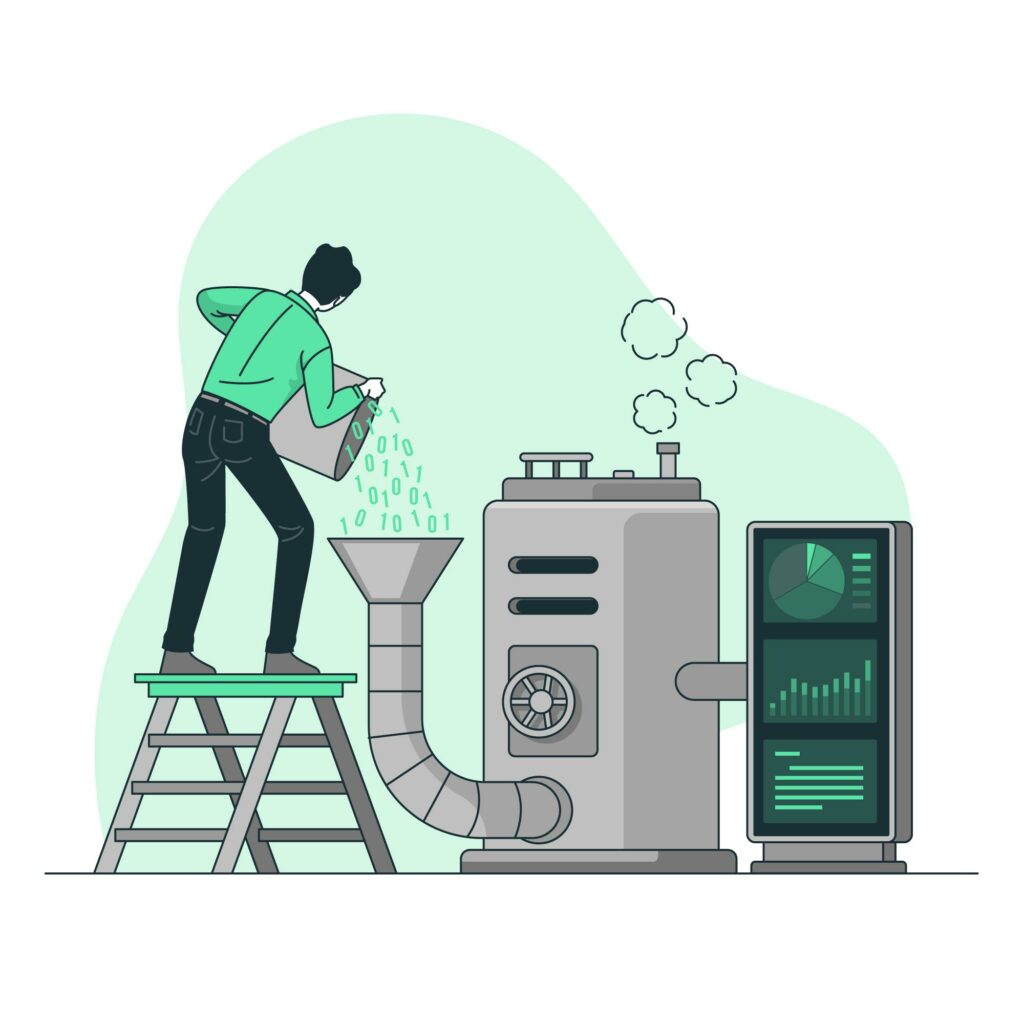Introduction
Let's cut straight to the chase: the way most businesses are currently deploying AI is fundamentally flawed. It's not just about coding or software engineering; it's about unleashing the full potential of AI across your entire organization. Why? Because if you're only letting your tech team play with AI, you're leaving a ton of money and innovation on the table and working at snail’s pace, blind to the user challenges and workflows within your organizations. It's that simple.
The Big Problem: AI's Narrow Alley Interface: Great for Developers – Untouchable For The Rest Of Us.

Right now, cutting edge AI tools are like Ferraris being driven only in first gear because they're too complex for anyone who isn't a software engineer. Imagine having a powerhouse engine that could transform every aspect of your business, but only a select few know how to turn the key. That's the current state of AI in most companies. This coder-centric approach isn't just limiting; it's a bottleneck that's throttling your company's potential. The rest of us are left using ChatGPT which is like the MS-DOS / command line approach to AI. This is boring and slow, and less useful than what’s possible.
The Problem With AI Chat: Dumb Time Suck By Design
First, AI companies want you to use the chat / command line, to intentionally slow you down, because it saves them money.

Those AI companies you subscribe to encourage you to have “chat” conversations for a number of reasons including:
- You will hit your limits or trigger higher expenses sooner and often. This is why they offer you free prompt libraries with incredibly basic prompts that require a lot of back and forth to make useful. It’s not for your benefit.
- Chat taps into less compute, the critical and costly metric of intelligence and calculation in the AI world. The more compute required, the higher the costs to the AI and/or you. By limiting the interface to chat,
- Chat creates opportunities for the AI to reject complicated/expensive requests, or those that reveal what companies like Google and OpenAI are gatekeeping (including scraping websites for data, or up to date information, or unbiased or opposing political viewpoints), or produce questionable (feels fake) errors as a response.
It’s slow, it’s not user centric, and it’s not necessary. There are better ways.
Break Down the Walls: Democratize AI Development By Integrating It With a Workspace Everyone Knows How to Use

What if every employee could harness the power of AI? What if your marketing team, sales staff, and customer service reps could all leverage AI to make smarter decisions and drive innovation? That's not a pipe dream—it's entirely possible with a shift in how we think about AI tools and who gets to use them.
Does your company have a Unified Workspace or integrated app environment where all the data is connected and everyone can collaborate? Hopefully the answer is yes, but it’s still an emerging paradigm and new concept for many organizations.
Organizations often struggle to integrate innovations, because they get addicted to shopping for bright and shiny objects (new tech), rather than successfully leveraging them. What good is that expensive new piece of tech if it’s not delivering an advantage?
Don’t Get It Twisted: Winning More Races is Not The Result Of Merely Buying Newer Parts

It’s all too common for organizations to get myopic on tech solutions, rather than the problem they are trying to solve. New tech alone does not and will not likely in and of itself increase performance or win your company more races. There’s a heck of a lot more to it than that.
Recognize How Corporate Innovation Sausage is Made
Here’s how innovation sausage is made for most businesses: no one knows where to start, they don’t want to risk their careers, so they hire a management consulting firm to lead the way. This way, if things fail, they’ve rented a fall-guy, at a premium (and the consultants know it).
Most of the consultants are theorists, who are aware of the solutions out there. They’re white collar, over-glorified B2B salesmen, and don’t have a background in building, integrating and managing things just pontificating on the way they “should” work…in theory. They just sell the concept/framework and the ideas and tap-dance to a pre-fabbed PowerPoint deck.

But companies need them for 2 reasons. Reason one – they’re kind of like personal shoppers. They know all the stores, what’s on the shelf, what looks good, but not necessarily what will ultimately work for you. But they make you look good in the process. And of course, Reason two – they are easy to fire, to take the heat for bad decision making.
So companies and consultants go about an expensive makeover, grabbing new efforts and gizmos off the shelf and stapling them to the face of the company. Then after many, many billable hours, the effort likely fails in implementation or integration, finger pointing and bouts of the blame game flair up and the consulting firm is usually fired.
In the aftermath, the company leadership walks away feeling proud of their cost cutting decision, and points to some proof of concept project and calls it innovation, that the PR team can use to garner attention. And, the consulting firm walks away with a case study, showing they delivered on their end, (which almost always stops short of implementation and integration). Meanwhile the company as a whole is now down a few bucks and right back to where it started.
Taking Eyes Off The Ball

Basically, it’s a known, lose-lose shitshow, wrapped up as a near term win-win. And that’s how the “innovation” sausage is made kids. The point is, in this pattern, no one was focused on actually improving performance and winning more races – else they would have reflected on implementation and integration issues from the onset.
Companies have been trained over time to focus on buying new toys, better parts, as they’re sold on the idea that the deployment of those new gizmos alone will result in better performance. And no one is honest about it, but with every purchase, they’re renting a fall-guy firm to take the heat it if and when it all goes to shit. And everyone settles for consolation prizes.
So right out of the gate, they’ve let their focus slip away from improving performance and winning more races. The AI trend is no exception.
Early generations of AI interfaces were designed by geeks for geeks – creating a geek chokepoint

The tech and gadget obsessed myopia results in a user interface that is equally myopic, fit for geeks and no one else in the workspace. Even developers moan about how bad and primitive the AI working environments are. When even the coders are crying about it, you can expect the interface to be pretty terrible. That most assuredly means a limited number of contributors and contributions, ultimately decided by a geek (resulting in what will forever be known as a Fauci Problem).
If the only way a company is adding context to it’s AI is in combination with code, Houston, we have a problem.
There’s more to AI than thoughtful code. There’s strategy, workflow, subject matter and context from every department. And in the age of Crew AIs and AI agents, you need to incorporate managerial expertise as well. This is well outside the bailiwick of a software engineer.
To the geeks among us: Are you organizing and storing the AI information appropriately? Or playing God without taking notes?

I’ve seen countless webinars, where teams are literally working ONLY in developer environments including with contextual data. This is bad for many reasons. Mainly though, it’s a choke point of multiple dimensions. It creates an exponentially longer feedback mechanism and intervention system to respond to issues. It’s like back in the day when all decisions went through the IT department (overwhelmed with issues). Don’t wait up!
Fundamentally, the context, the guts of modern AI efforts, need to be piped into AI development efforts from elsewhere. This allows more subject matter experts to participate and update critical context. If a small team, or worse, single Faucian labcoat is determining what’s in and what’s out, you are liable to run into a myriad of problems.
Don’t let Big Tech Dictate Your AI working Environment.

There is a secret war for the AI management environment. Google is in the fight of its life with AI, and trying desperately to be the go to AI management interface, and resource for all things AI. However, the current interface for new normal use-cases (agents and crews) it’s still a place for developers, not cross-functional teams. And no organization needs to wait for Google or others to get its ducks in a row, charge a fee and data scrape your material to serve users with more ads.
How To Win More Races And Improve Performance In The Process

Heroik takes a different approach to innovation efforts. Our entire approach is holistic, and is based on the assumption that we’re standing at the front lines with our clients from thought to profit. So unlike the rest of the market, which sells the equivalent of B2B retail gimmicks, we don’t have the luxury of designing and selling theoretical, and walking away from the explosions in the aftermath. We actually have to build and implement stuff that works. So we design and procure stuff that can be successfully integrated from the onset – ensuring we win more races because our cars are on the track faster, continuously improving with fewer breakdowns than everyone else’s.
Increasing performance and winning more races is not merely about technological innovation (new gadgets), it's about which innovations can be implemented and successfully integrated as fast as possible. Think of it as focusing on actual operating speed vs. theoretical resulting speed. By taking a holistic approach, you look at your net potential result instead of the theoretical.
Dropping an Alien engine in your 1980’s DeLorean isn’t magically going to make it work, or send you Back to the Future.

Maybe one computer geek understands it all, but he doesn’t know how the rest of the car works. And geeks love to gatekeep, it’s the only power play they have. These issues leave you stuck in the garage of development, while the competition is actually on the road and in the race. You may have superior technology, but the odds of you catching up decline the longer your car sits.
When it comes to AI: The user interface and workspace are critical to achieving a competitive advantage.
It’s not enough to come up with a new engine or gadget, you must also innovate the experience to encourage adoption and successful integration (as fast as possible).
The Shift: Connect AI To The Unified Workspace.

Buckle up, because we’re going to go through some hard and fast turns here, so keep up without throwing up.
Enter the game-changer: no-code platforms. These tools are the great equalizers, putting development in the hands of the many, not just the tech-savvy few. No-code platforms are to the workspace what WYSIWYG editors were to website creation—they make a previously complex and exclusive technology accessible to everyone.

No-code platforms allow companies to build a Unified Workspace, one app to rule them all. An integrated approach to building connected tools and data – without requiring a computer science degree.
But what about AI?
Introduce – True No-Code AI

As you grow beyond the “ChatGPT” / MS-DOS and command line primitive AI approach, you begin to understand how AI in the workplace really succeeds:
- Foundational Models (the engines under the hood) will come and go – It’s less about the model, more about context and clarity of instructions.
- The current new normal is bigger than just a chatbot: AI agents, autonomous bots, working together in groups, managed by other AI with human oversight (for now). And these new hybrid teams of AI and humans can only succeed if given all the right instructions, context and data.

Maybe you’re used to ChatGPT, and find that hard enough to get your team to take advantage of. The truth is – we’re already way past that. We’re in the land of AI agents lending a helping hand, or working on crews or teams of other AI agents, managed by more AI. Things are escalating quickly.
For now, it’s best to pursue a hybrid / cyborg approach, with human overwatch throughout. The thing that makes it all possible though, the next linchpin is not code, it’s context and content. It’s all those strategic documents (you promised yourself you’d create at the last company retreat), and data that’s organized and ready for analysis.
The future of competitive advantage rests not on your ability to code or be a good data analyst, it’s dependent on your ability to clearly communicate and articulate your vision, mission, values, and strategies, and supply AI with all the critical context it needs to come along side your teams and accelerate their efforts.

The guts of the current AI effort have some common core components:
- Agents have personas (backgrounds, resumes, specific skills and experiences and even baggage if need be).
- Company context – Company’s industry information, competitive landscape, positioning, vision, goals, and strategic plans need to be adhered to.
- Projects have details, constraints, and finite resources that need to be considered
- There are optimal workflows, with prefabbed tasks, and tasks that have to be added on the fly.
- The agents need prompt-chains or prompt designs that generate optimal outputs.
This information can and should be organized in the company’s No-Code Unified Workspace, as various connected and integrated databases. And this information, that is regularly updated in real-time can be plugged into AI in any number of ways, from leveraging built-in AI, to integrating with the current AI leader via API.

The critical takeaway is this: NONE of these require a scientist or software engineer to create. In fact, to avoid failures of Fauci like proportions, scientists should not be the choke point for these solutions. AI efforts need inputs from the relevant subject matter experts, not a one man ego-trip, gatekeeping the future of productivity for the entire organization. Yet this is how many businesses are approaching AI development.
The same no-code revolution that allows organizations to build Unified Workspace Systems, can be leveraged to create No-Code AI for a sustainable competitive advantage.
FTW: Winning With The Unified Workspace + AI

This approach generates a number of near and long-term advantages:
- You have more heads and hands involved in AI, earlier in the adoption process, which gives you the ability to move fast, take advantage of subject matter expertise, fail fast, and improve fast.
- Faster feedback loops – AI team members/ participating subject matter experts are able to identify issues and intervene faster. Much of these issues are related to workflows, and language, not code. And even coding issues can be isolated and identified faster. This relieves technical teams of contextual burdens, and fosters informed and focused discussions based on first hand experience.
- It’s cheaper and more cost-effective, and efficient than paying the nerds to do it. A traditional development team will guess and check their way through context. This is slow and expensive.
- Change Management is a lighter lift because Implementation and integration is baked into the process. If your organization already using a Unified Workspace, and power users are familiar with it, they require FAR LESS training on AI, and can be making contributions in minutes not months!
- The entire organization is involved in the AI effort, by keeping the unified workspace organized and up to date. This is yet another reason to keep documentation and data entry accurate and organized. It’s training the AI which is used to aid and support critical efforts of the business to move faster and better than ever before.
- Transformation, implementation, time to market, integration and acceleration are easier and faster. Less training is required to start using this approach, there’s less red-tape, less bureaucracy (bullshit and excuses), and more time and effort focused on winning more races and improving performance.
Real-World Impact: Unified AI in Action

Imagine your customer service team tweaking AI parameters to better understand and predict customer issues, or your HR department using AI to analyze job applications more efficiently. With no-code platforms, these scenarios become everyday realities, not just wishful thinking. This isn't about replacing jobs; it's about enhancing every employee's ability to contribute meaningfully to the business's success.
Overcoming Challenges: Make It a Team Sport

Of course, democratizing AI isn't without its challenges. Training, data security, and maintaining quality are all hurdles to clear. But these are not insurmountable. With proper training sessions, robust security protocols, and clear guidelines on AI usage, these challenges can be turned into opportunities for growth and learning.
Conclusion: This Is Only The Beginning…

This is more than just an improvement in technology—it's a revolution in how we approach business problems and solutions. AI shouldn't be the exclusive domain of a few gatekeepers. It should be a tool that empowers every employee, enhancing creativity and productivity across the board.
So, let's do away with the old gatekeeper model. Let’s tear down these walls and equip your entire team with the tools they need to drive real, impactful change. The future of your business depends on it. Embrace the no-code revolution and watch your organization transform from a limited AI participant into a full-fledged AI powerhouse. Because in today’s world, empowering your team with AI isn’t just a nice-to-have; it’s a must-have to stay competitive and innovative.
Contact Heroik for more information, a free cup of clarity, and roadmap for your AI efforts.
Ready to revolutionize your business with AI? It's time to go full throttle.






